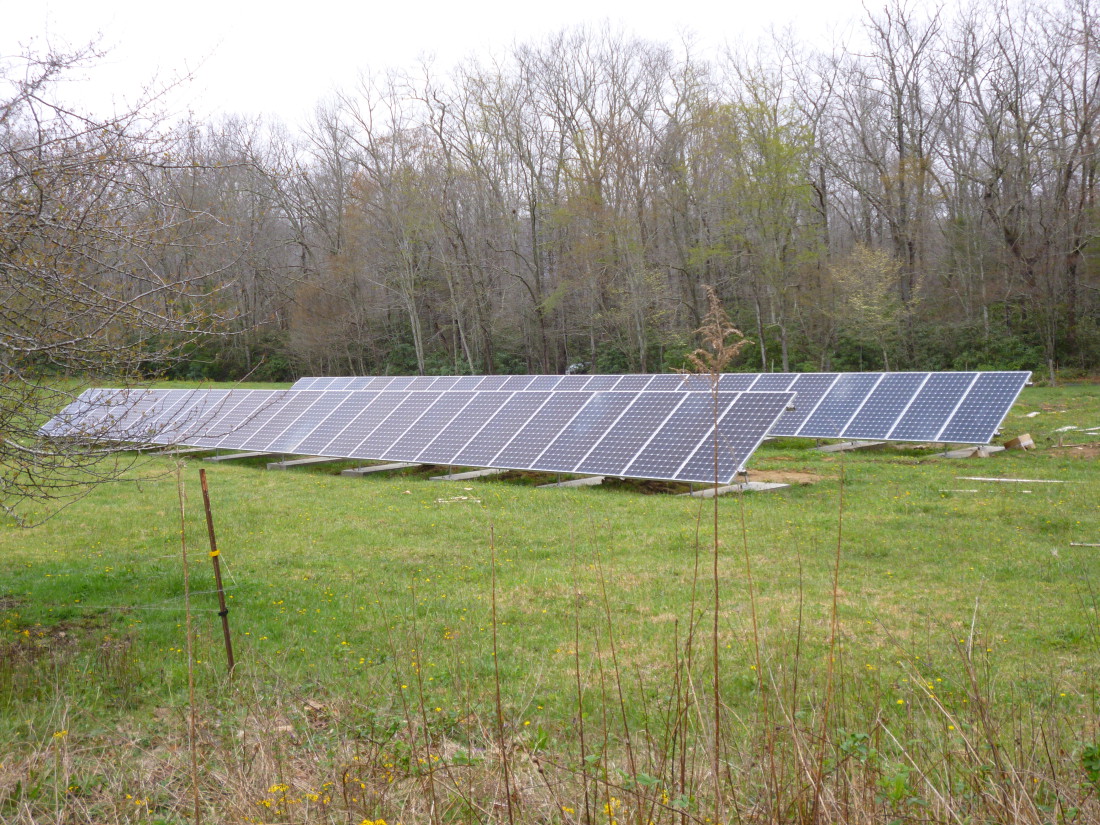By Tal Galton
For years, students at the Arthur Morgan School have returned after 18-day “Power Trips” recounting shocking tales of the destruction caused by mountaintop removal coal mining in West Virginia, just a couple of hundred miles north of us. This year, in “Saving Miami Beach,” a climate change class and trip, students learned about rising sea levels and habitat disruption caused by our civilization’s addiction to coal and other fossil fuels.
Meanwhile, in 2014, the school paid the French Broad Electric Membership Corp., our local utility, $17,700 for 91,000 kilowatt-hours of power. To produce that electricity, 17 tons of coal were burned, releasing 69 tons of carbon dioxide into the atmosphere. And though we’ve used generous support from The Green Initiative Fund to replace old, inefficient appliances, our power consumption continues to grow due to increases in technology, freezer space and dehumidifier use.
For many years, we’ve heated our buildings with wood, a renewable fuel, offset by our stewardship of nearly 100 acres of Appalachian hardwood forest that busily gobbles up carbon dioxide from the atmosphere each summer. But the dark cloud of carbon emissions and the distant rumbling of beloved mountains being blown to bits still fog our collective conscience.
Thanks to a fortuitous series of events, however, the school is finally able to mitigate its carbon footprint. This spring, solar panels are sprouting out of the ground in Moon Field. Well, not exactly sprouting: With help from staff and students, Atomic Solar, a locally owned and operated company, is erecting the biggest solar power array within French Broad Electric’s entire operating area. By summer, we’ll have 52.2 kW of potential power online, making it the largest source of electricity in our three-county corner of North Carolina. Within a year, we hope to produce about 74,000 kwh of power: 80 percent of the school’s total consumption.
We are fortunate that SunPower Corp. donated the 52.2 kW worth of solar panels. And then, drawing on various available funds, generous donations and grants, Heather Dawes spent a year cobbling together the money needed to complete the installation.
Unfortunately, French Broad Electric has ended the practice of net metering, so it will be buying our output at half the market value. We’ll still see a modest return on the panels, though, perhaps earning $3,500 a year. In other words, though we will be supplying 80 percent of our own power, we’ll save only 20 percent on our bills.
But at the Arthur Morgan School, the equation isn’t solely about dollars and cents. Next year, the community will watch the new field of solar panels soaking up the sun’s rays among the cows and sheep in Moon Field. And perhaps, on returning from future field trips to West Virginia, students will report that the dust has cleared, the carbon is staying in the ground, the mountains are intact and the forests are flourishing.
Tal Galton teaches at the Arthur Morgan School. Rebekah McGill, a student at the school, provided research assistance.




I’m against installing solar panels on open fields. Put them on roofs or paint them on buildings. It does the environment no favors to chop down trees to install these. If it was going to be an open field, it would be better as a farm.
As an Arthur Morgan School staff member, I can assure you that no trees were cut to install this field. Moon field has been used as winter pasture for our milking Devon, Nettle, and for our flock of sheep for the last few years and has been cleared for decades. The school’s garden is in another corner of campus, you’re welcome to take a look at arthurmorganschool.org. We share your concern for deforestation but would feel intimidated at the prospect of erecting enough roofs to carry this many panels.
Keep track of your bills; I look forward to seeing how this all works out after the grants and contributions are used up.